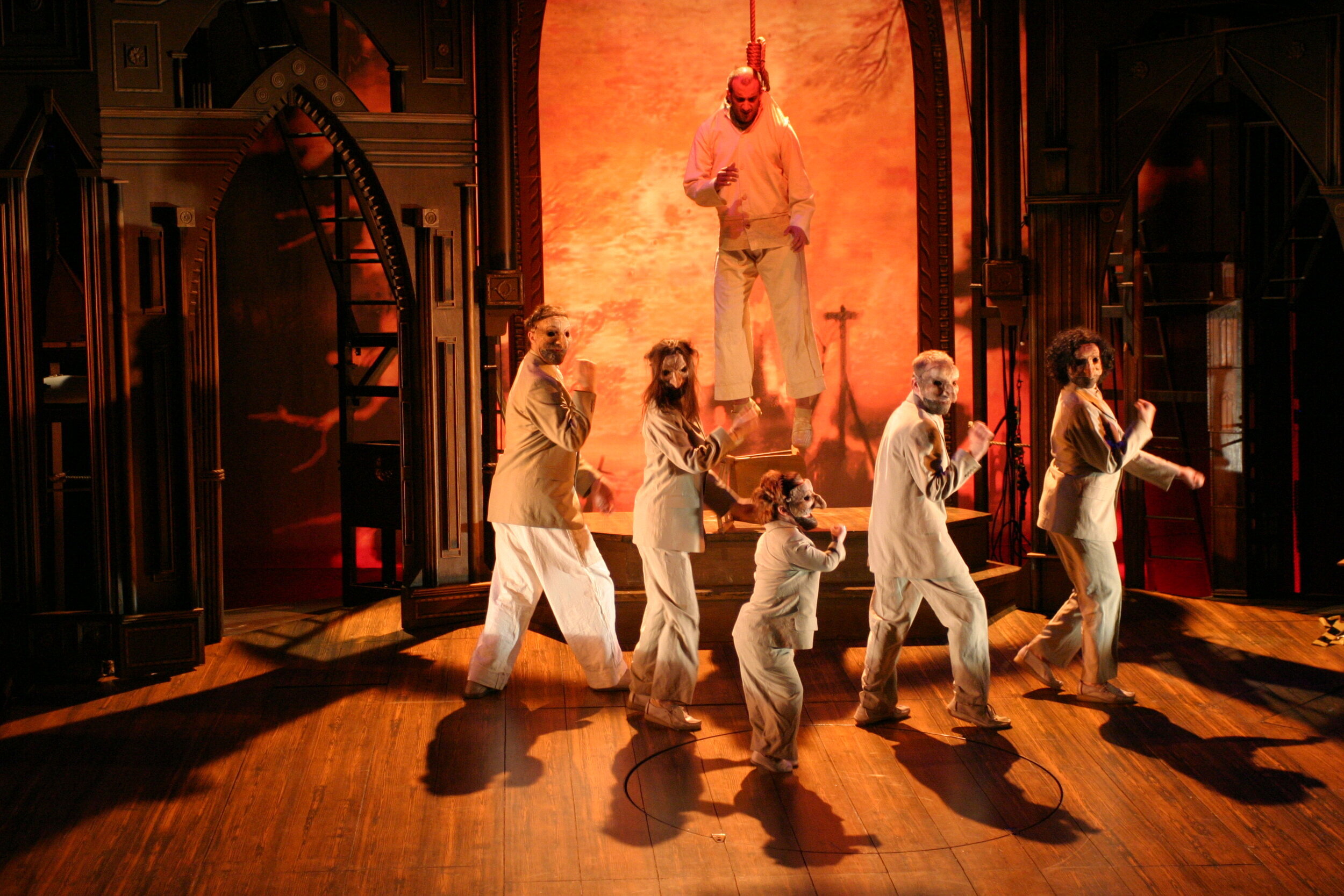Those with Buildings and Those Without, by Richard Katz
The cast of The Hanging Man. Photo: Keith Pattison
Dear All,
For the next few weeks our regular updates are going to be written by you! We want to share some of the incredible responses we have received from the invitations and provocations that we have put out so far. It has been moving, heartening and hugely affirming to read of the many resonances our Gathering project has with others of you out there, also looking for a creative home. So this week, we are posting up on our virtual rehearsal room wall, an insightful letter that we received from the actor Richard Katz, who worked with us in The Hanging Man in 2003. Without further ado, over to Richard…
Hey Guys,
So lovely to hear from you. Almost certainly, I’m about to launch into an overly long email about why I think it’s a brilliant and important thing — to find some kind of home.
You probably… Improbably… know all of this anyway, but below is my hot/lukewarm take...
For most of my life as a jobbing actor, I’ve been ploughing the furrow between two quite opposing modes in our ‘industry’… Working either for those companies that have loads of stuff (buildings, rehearsal rooms, costumes) but no people… OR for the companies which have the people but no stuff.
It’s really fascinating that when I talk about one side to the other - let’s say a conversation at The Globe about Improbable - they are so jealous of what they perceive to be a more spontaneous way of being. They say that companies who are not encumbered by all that hardware are able to be more dynamic, more spontaneous, and — and I really felt this during lockdown — more able to present a less confident face to the world; which is to say, companies like the RSC and The Globe need to look confident, settled, organised. “This is our 2021 Season”, they say, “We’re calling it The Love Season, and here is a bunch of plays we’re going to put on. Isn’t it great? Yes, it is. And won’t they be great too?”
The problem with all this confidence, is that when something disruptive comes along (a global pandemic, say) they are not only unsure of how to turn all that ‘certainty’ into something else - some artistic response, for instance - but they’re also totally encumbered by the weight of their assets.
I truly feel that the swollen nature of how these big companies work is that they’ve forgotten about the naive, delicate and often very unsure way of making work. “Quick, we’ve got this space, that space… let’s fill them with things… let’s also be making plans so we can then fill them with more things after that.” Which is ‘fine’ until circumstances force them to have to change direction. Which means that they have literally no way to express their uncertainty (or of embracing uncertainty when it comes) in a positive way. All the stuff they have is there all the time, and if they don’t try and fill it (or cannot fill it because of the covid-like times) then they almost immediately start to spin towards a vortex of existential angst.
The opposite of this, of course, is that whenever companies without any of that kit want to make work they already have a problem baked into their existence; one of how/where to even start. “Let’s do an R & D at Toynbee/Jerwood, for a week or so, invite a few chums to a show and tell” etc. If the R & D is successful, sometimes it can be months or even years before the next iteration of the project can stretch its legs. I’m sure this is a familiar enough pattern to you guys.
The more I work, the more I traverse the space between these two opposing worlds, the more I believe - and I’ve had this conversation many times with Complicite and with people like Michelle Terry at The Globe - that a building (place, company) that has some of the stuff (space) and a true working ensemble (the artists) can definitely have its cake and eat it. I suppose that I imagine some sort of sweet spot. A place which has the size to sustain a group of artists for whom the act of creation is a fluid, ongoing, and organic experience.
In this version of the company/place/people dynamic, there is room enough for the ensemble to be working on many things - some in development mode, some rehearsing, some performing - but without the building’s size having to force those different groups to be producing material at any cost. I guess what I’m saying is there must surely be a happy medium. Where the size and capacity of the stuff is sustainable enough without having to rely on bums on seats only. That’s the bit where things gets sticky, I reckon.
I do hope all this makes sense, makes clear the kind of argument I’m trying to make. I’m sorry for rambling on, but this area is one I’ve spent so long thinking about. This (my ramblings) might not even be the kind of response that you guys were after, but I really wanted/want to help to be part of the debate as you move forwards. I’d love to be part of whatever ongoing process you’re having.
That, I think, is all! Jesus, I hope it’s useful and not just the sun-baked ramblings of a man who doesn’t get out enough.
Peace and love, and hopefully we can catch up soon,
Katz x

